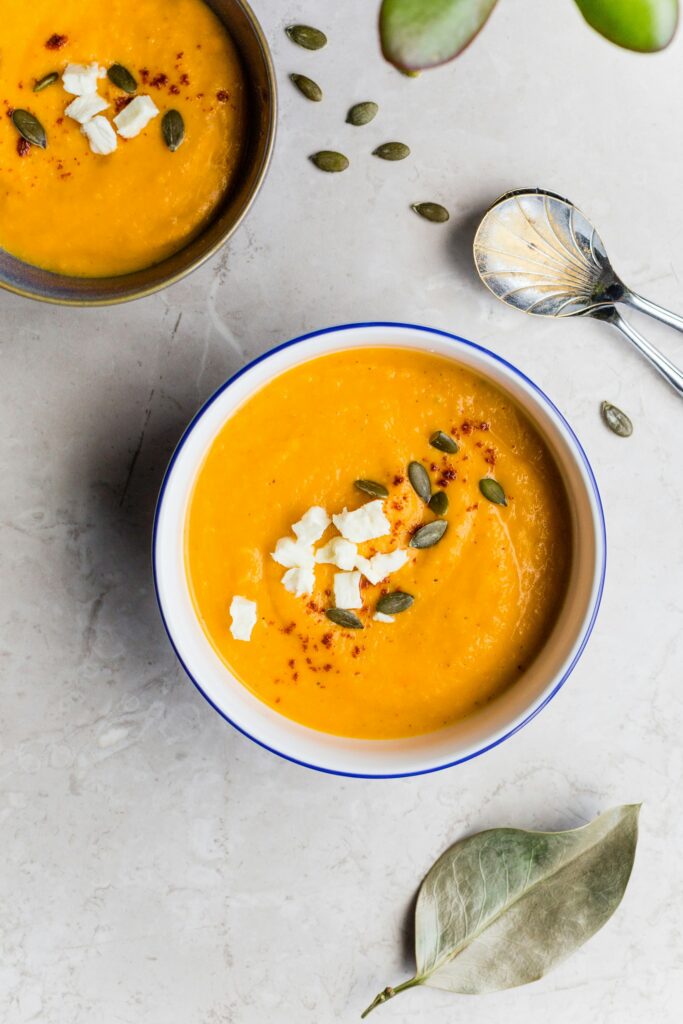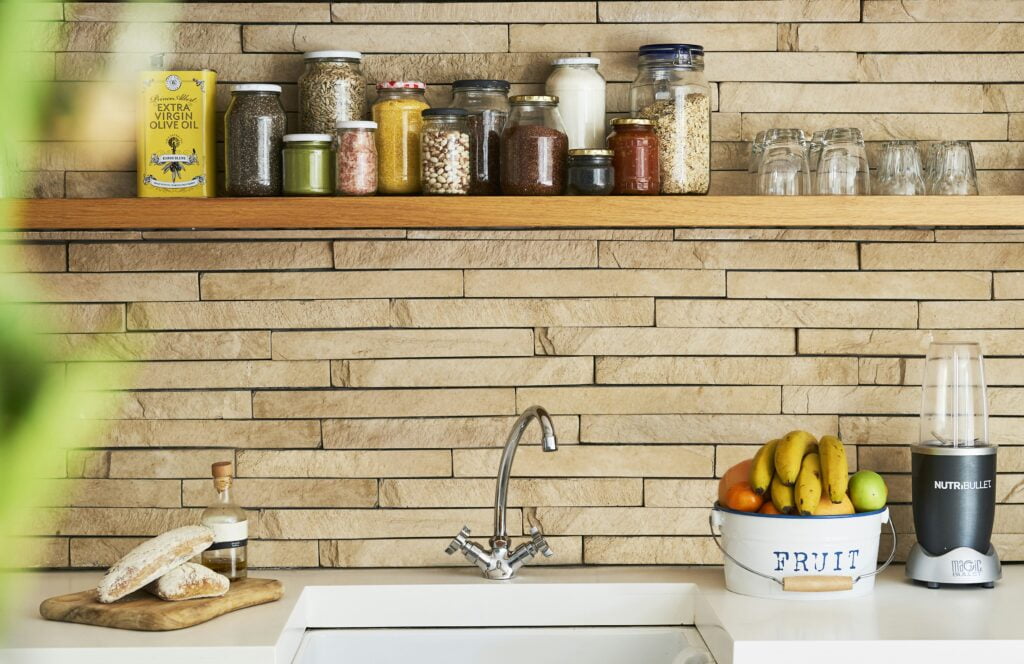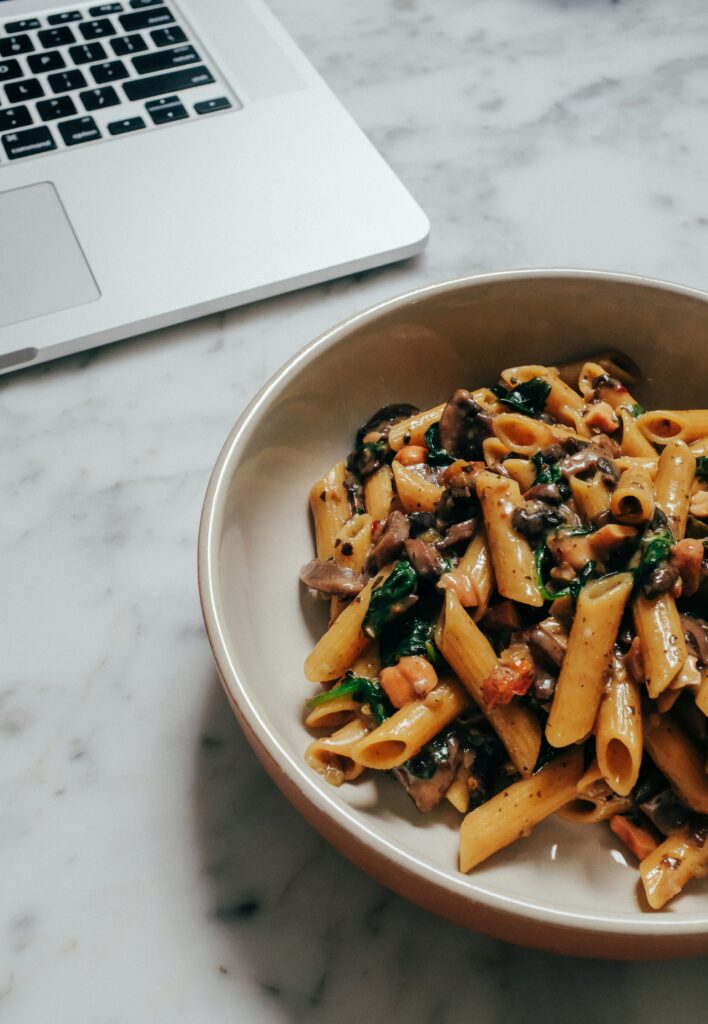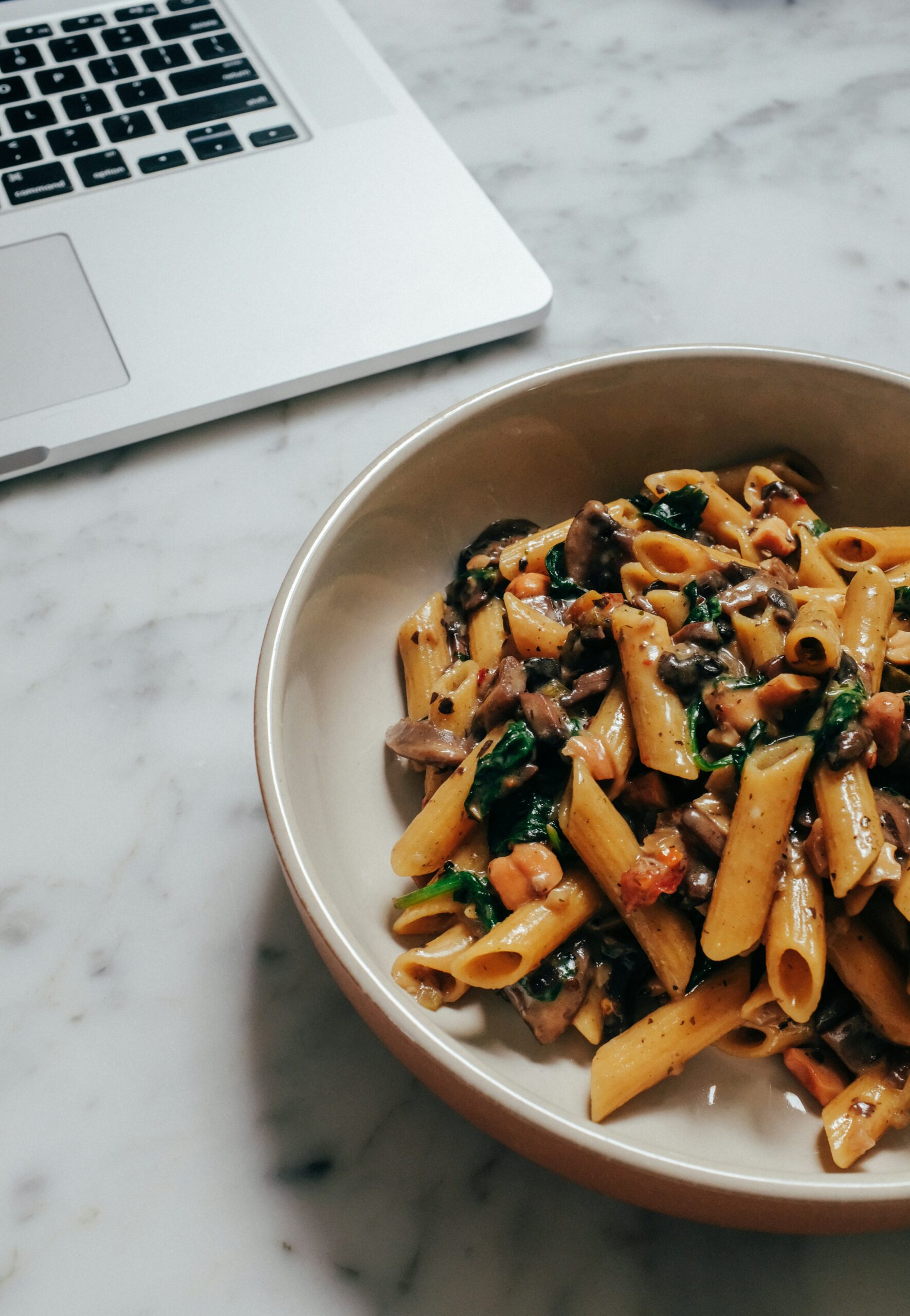Have you ever wondered how to make your grilled vegetables more flavorful and exciting? If so, you’re in luck! In this article, we will explore simple and creative ways to add a burst of flavor to your grilled vegetables. Whether you’re a seasoned grilling expert or just starting out, these tips and tricks will help you take your grilled vegetables to the next level. Get ready to tantalize your taste buds and impress your friends and family with their favorite summer dish!
Choosing the Right Vegetables
Understanding vegetables’ unique flavors
When it comes to choosing the right vegetables for grilling, it’s important to consider their unique flavors. Each vegetable has its own distinct taste and texture, and understanding these characteristics can help you create a well-balanced and flavorful dish. For example, sweet vegetables like bell peppers and corn can add a touch of natural sweetness to your grilled vegetables, while zucchini and eggplant can bring a creamy and slightly earthy flavor. Leafy greens such as kale and spinach can provide a hint of bitterness and a satisfying crunch. By considering the flavors of different vegetables, you can create a diverse and delicious grilled vegetable medley.
Selecting fresh vegetables
To ensure the best flavor and texture in your grilled vegetables, it’s crucial to choose fresh produce. Look for vegetables that are firm, vibrant in color, and free from any signs of wilting or decay. The freshness of the vegetables will greatly impact their taste and tenderness when grilled. If possible, try to buy vegetables from local farmers’ markets or grow your own in a backyard garden. These options often offer the freshest and most flavorful produce, as they are often harvested at the peak of ripeness.
Combining vegetables with complementary flavors
While grilling vegetables can bring out their natural flavors, combining them with complementary ingredients can take your dish to the next level. Consider pairing sweet vegetables, such as cherry tomatoes or bell peppers, with tangy flavors like balsamic vinegar or lemon juice. Add a sprinkle of fresh herbs like basil or cilantro to enhance the overall taste and aroma. Additionally, don’t be afraid to experiment with different combinations – for example, mixing sweet potatoes with savory spices like cumin and paprika can create a mouthwatering contrast of flavors. Combining vegetables with complementary flavors can help create a well-balanced and delicious dish that will impress your friends and family.
Preliminary Preparations
Washing and drying vegetables
Before grilling your vegetables, it is essential to wash them thoroughly to remove any dirt or debris. Rinse each vegetable under cold running water and gently scrub them if needed. This step ensures that your vegetables are clean and safe to consume. After washing, make sure to dry them thoroughly using a clean kitchen towel or paper towels. Excess moisture on the vegetables can prevent proper grilling and may lead to a less desirable texture.
Trimming and cutting vegetables into grill-friendly sizes
To ensure even cooking and easy handling on the grill, it’s important to trim and cut your vegetables into grill-friendly sizes. Remove any stems, leaves, or other parts of the vegetable that are not meant to be eaten. Cut larger vegetables, such as eggplant or zucchini, into slices or chunks of similar thickness. This will ensure that they cook at the same rate and have a consistent texture. Smaller vegetables like cherry tomatoes or green beans can be left whole or skewered for convenient grilling. Taking the time to trim and cut your vegetables to the appropriate size will make the grilling process much smoother and result in evenly cooked and delicious vegetables.
Soaking some vegetables in water before grilling
Some vegetables, like onions or potatoes, benefit from being soaked in water before grilling. Soaking onions in water for about 30 minutes can help mellow their flavor, making them sweeter and less intense. Potatoes, especially when cut into fries or wedges, can benefit from soaking to remove excess starch, resulting in crisper and less mushy grilled potatoes. Soaking these vegetables before grilling can enhance their taste and texture, providing a more enjoyable eating experience.

Marinating Vegetables
Benefits of marinating for flavor infusion
Marinating vegetables before grilling is a fantastic way to infuse them with flavor. The process involves soaking the vegetables in a mixture of marinade, which typically consists of oil, acid (such as vinegar or citrus juice), and various herbs and spices. Marinating can help tenderize the vegetables, allowing them to absorb the flavors of the marinade more effectively. It also adds moisture, preventing the vegetables from drying out during grilling. Marinating not only enhances the taste of the vegetables but also helps to create a delicious, juicy, and flavorful end result.
Choosing the right marinade
When selecting a marinade for your grilled vegetables, there are countless options to consider. The choice of marinade largely depends on personal preference and the flavor profile you want to achieve. For a simple and versatile marinade, consider combining olive oil, balsamic vinegar, minced garlic, and your favorite herbs like thyme or rosemary. This combination adds a touch of acidity, richness, and aromatic flavors. If you prefer a tangier taste, try a marinade with lemon juice or soy sauce. Experiment with different combinations of oil, acid, and seasonings to find the marinade that best suits your taste buds.
How long to marinate vegetables
The length of time to marinate your vegetables depends on their density and the intensity of flavor you desire. Firmer vegetables, such as carrots or potatoes, benefit from longer marinating times since their dense texture takes longer to absorb the flavors. Aim to marinate vegetables for at least 30 minutes, but overnight marinating can yield even more pronounced results. Softer vegetables, such as zucchini or mushrooms, don’t require as much time to marinate due to their porous nature. Keep in mind that while marinating can enhance the flavor of the vegetables, over-marinating can lead to a mushy texture. It’s all about finding the right balance and considering the specific vegetables you’re working with.
Applying Oil and Seasoning
Choosing appropriate oil
When it comes to grilling vegetables, selecting the right oil is crucial. Avoid using oils with low smoke points, such as extra virgin olive oil, as they can burn quickly and impart a bitter flavor. Instead, opt for oils with higher smoke points, such as canola, avocado, or vegetable oil. These oils can withstand the high heat of the grill without burning and provide a neutral flavor that allows the natural flavors of the vegetables to shine. Consider experimenting with flavored oils, such as garlic-infused olive oil or chili-infused avocado oil, to add an extra layer of flavor to your grilled vegetables.
Seasoning options and their impacts on flavor
Seasoning plays a vital role in enhancing the flavor profile of grilled vegetables. You can choose from a wide array of seasonings, including salt, pepper, garlic powder, onion powder, paprika, cumin, or herbs like basil, thyme, or oregano. The choice of seasoning largely depends on personal preference and the flavor profile you want to achieve. Salt and pepper are classic choices that can enhance the natural flavors of the vegetables, while spices like paprika or cumin can add a smoky or earthy undertone. Fresh herbs provide a vibrant and aromatic flavor, elevating the taste of the grilled vegetables. Experiment with different combinations of seasonings to find the perfect blend that suits your taste buds.
Timing and techniques of oil and seasoning application
To ensure optimal flavor and texture, it’s essential to apply oil and seasoning to your vegetables at the right time and using the appropriate techniques. Start by brushing the vegetables lightly with oil just before grilling. This will help prevent sticking to the grill grates and promote a nice char and grill marks. Once the vegetables are on the grill, you can sprinkle them with your desired seasonings. Avoid applying the seasonings too early, as they can burn and become bitter. Instead, apply the seasonings a few minutes before the vegetables are fully cooked to allow them to meld with the natural flavors. Be sure to distribute the seasonings evenly to achieve a consistent and well-balanced taste.

Grilling Technique
Charcoal vs. gas grilling
When it comes to grilling vegetables, both charcoal and gas grills can yield excellent results. Charcoal grills impart a distinct smoky flavor to the vegetables, which some people find irresistible. If you enjoy the smokiness, opt for a charcoal grill and use natural lump charcoal or hardwood briquettes for an authentic flavor. Gas grills, on the other hand, offer convenience and precise temperature control. They are easy to start and maintain a consistent heat level, making them ideal for beginners or those looking for quick and efficient grilling. Ultimately, the choice between charcoal and gas grilling boils down to personal preference and the flavor profile you wish to achieve.
Using direct and indirect heat
When grilling vegetables, it’s essential to understand the concept of direct and indirect heat. Direct heat refers to grilling the vegetables directly over the heat source. This method is ideal for smaller and thinner vegetables that cook quickly, such as asparagus or cherry tomatoes. Indirect heat, on the other hand, involves placing the vegetables away from the heat source to cook more slowly. This method is suitable for larger and denser vegetables that require more time to cook, such as potatoes or carrots. By utilizing both direct and indirect heat, you can ensure that all your vegetables are cooked to perfection, with a charred exterior and a tender interior.
Determining the right grilling temperature
The ideal grilling temperature for vegetables generally ranges from 350°F to 450°F (175°C to 230°C). It’s essential to preheat your grill to the desired temperature before adding the vegetables. Too low of a temperature may result in undercooked vegetables, while too high of a temperature can lead to charring or burning. When grilling delicate vegetables like zucchini or mushrooms, it’s best to aim for the lower end of the temperature range to prevent them from overcooking or turning mushy. For heartier vegetables like peppers or onions, a higher temperature can help achieve a nice char and caramelization. Keep a close eye on the vegetables while grilling and adjust the temperature as needed to ensure even cooking and delicious results.
Using Grill Foil or Vegetable Basket
Advantages of using grill foil/basket
Grill foil and vegetable baskets are practical tools that can make grilling vegetables easier and more enjoyable. Grill foil, also known as aluminum foil, can be used to wrap individual vegetables or create packets for cooking. Benefits of using grill foil include easy cleanup, convenience in handling smaller or delicate vegetables, and the ability to customize seasonings and add moisture to the vegetables. Vegetable baskets, on the other hand, are wire or mesh containers that hold the vegetables together while allowing heat and smoke to penetrate. They are ideal for grilling smaller or chopped vegetables as they prevent them from falling through the grill grates while still achieving a nice char. Both grill foil and vegetable baskets provide a convenient way to grill vegetables, ensuring they are cooked to perfection.
How they affect the vegetables’ flavor
Using grill foil or vegetable baskets can impact the flavor of the vegetables in different ways. Grill foil helps retain moisture and create steam, resulting in tender and juicy vegetables. It also allows you to add seasonings and other ingredients to the foil packets, infusing the vegetables with additional flavors. Vegetable baskets, on the other hand, allow direct contact with the grill grates, promoting char and grill marks. This can contribute to a smoky flavor and a slightly crispy texture. Ultimately, whether you choose to use grill foil or vegetable baskets, the flavor of the vegetables will still be delicious, but the cooking method may impart a slightly different taste and texture.
Alternatives to grilling basket and grilling foil
If you don’t have a grilling basket or grill foil on hand, there are alternative methods you can use to grill vegetables. One option is to skewer the vegetables using metal or wooden skewers. Skewering the vegetables makes them easy to handle and prevents them from falling through the grates. Another alternative is to use a cast-iron grill pan or skillet. These pans are designed to withstand high temperatures and create grill marks, similar to grilling directly on the grate. Lastly, you can place the vegetables directly on the grill grates, ensuring they are cut into larger pieces or halves to prevent them from falling through. While these methods may require slightly different techniques, they can still produce flavorful and delicious grilled vegetables.

Herbs and Spices for Flavor Enhancement
Understanding herbs’ and spices’ flavor profiles
Herbs and spices are excellent additions to grilled vegetables as they can enhance their natural flavors and add complexity. It’s important to understand the flavor profiles of different herbs and spices to make informed choices when seasoning your vegetables. For example, basil has a sweet and slightly minty flavor, which pairs well with vegetables like tomatoes or zucchini. Thyme has earthy and slightly floral notes, making it suitable for root vegetables like potatoes or carrots. Spices like paprika add a smoky and slightly spicy taste, enriching the overall flavor profile of grilled vegetables. Experiment with various herbs and spices to discover unique and enticing flavor combinations.
When to apply herbs and spices
The timing of applying herbs and spices to your grilled vegetables can greatly impact the overall taste. For fresh herbs, it’s best to add them towards the end of the grilling process or even after the vegetables are off the grill. This preserves their vibrant flavors and prevents them from becoming overly wilted or losing their aroma. Dried herbs and spices, on the other hand, can be added before grilling or during the marinating process to allow their flavors to infuse into the vegetables as they cook. It’s all about finding the right balance and intensity of flavors that best suits your palate.
Popular herbs and spices for grilled vegetables
There is a wide array of herbs and spices that pair exceptionally well with grilled vegetables. Some popular options include:
- Rosemary: Brings a fragrant and slightly pine-like flavor, ideal for potatoes and root vegetables.
- Cumin: Adds a warm and earthy taste, great for grilled corn or peppers.
- Garlic: Enhances the overall flavor profile of grilled vegetables, providing a savory and aromatic element.
- Paprika: Offers a smoky and slightly spicy flavor, perfect for enhancing the taste of grilled eggplant or onions.
- Parsley: Provides a fresh and grassy flavor, complementing a variety of grilled vegetables.
- Chili powder: Adds heat and depth to grilled vegetables, giving them a bold and spicy kick.
These are just a few examples, and the possibilities are endless. Feel free to explore different combinations of herbs and spices to create unique and mouthwatering flavors for your grilled vegetables.
Using Smoke for Flavor Enhancement
Different wood types and their flavor profiles
Introducing smoke into the grilling process can add a whole new layer of flavor to your vegetables. Different types of wood chunks or chips can impart unique tastes, enhancing the overall experience. For example, mesquite wood produces a strong and distinct smoky flavor that pairs well with heartier vegetables like sweet potatoes or onions. Fruitwoods like apple or cherry offer a milder and slightly sweet smoke, which complements delicate vegetables such as zucchini or asparagus. Hickory or oak wood imparts a bold and rich smoky flavor that can stand up to stronger vegetables like mushrooms or peppers. Experimenting with different wood types will allow you to discover your favorite combinations and create exceptional grilled vegetable dishes.
Choosing the right wood for your vegetables
When selecting the right wood type for your vegetables, consider the intensity of flavor you desire and the specific vegetables you’re grilling. Mild woods like apple or cherry are versatile and suitable for a wide range of vegetables, as they provide a subtle and slightly sweet smoky taste. Stronger woods like mesquite or hickory are better suited for vegetables with robust flavors or those that can stand up to bolder smoke profiles. It’s important to strike a balance between the wood’s intensity and the vegetables’ natural flavors to create a harmonious and enjoyable taste. Don’t be afraid to experiment with different wood types and combinations to find the perfect match for your grilled vegetables.
How to properly smoke vegetables while grilling
To smoke vegetables while grilling, you can use a smoker box, foil packet, or simply place the wood chips or chunks directly on the charcoal or gas burner. If using a smoker box or foil packet, soak the wood chips or chunks in water for about 30 minutes before placing them in the box or creating the packet. This will ensure that they smolder and create smoke instead of catching fire. As the vegetables grill, the smoke from the wood will infuse into them, adding a delicious smoky flavor. It’s important to note that smoking vegetables doesn’t require the same amount of time as smoking meat, as vegetables cook relatively quickly. Take care not to over-smoke the vegetables, as this can lead to an overwhelming smoky taste. Monitor the grilling process closely to achieve the desired level of smokiness.
Adding Flavor After Grilling
Vinegar and other acidity enhancers
Adding a bit of acidity to your grilled vegetables can brighten their flavors and provide a refreshing contrast. One popular option is to drizzle vinegar, such as balsamic vinegar or red wine vinegar, over the grilled vegetables. The acidity in the vinegar cuts through any richness and adds a tangy and slightly sweet note. Lemon or lime juice can also be squeezed over the vegetables for a burst of citrusy freshness. The acidity enhancers not only elevate the taste of the grilled vegetables but also help balance out the overall flavor profile, making them more enjoyable to eat.
Adding fresh herbs and spices
Fresh herbs and spices can be added to grilled vegetables after cooking to enhance their aroma and taste. Finely chop or tear herbs like basil, cilantro, or parsley and sprinkle them over the vegetables. The fresh herbs provide a burst of freshness and add a vibrant touch to the dish. You can also add additional spices, like freshly ground black pepper or a pinch of smoked paprika, for an extra layer of flavor. The addition of fresh herbs and spices after grilling adds a visually appealing element and enhances the overall taste of the dish.
Dressing options for grilled vegetables
Dressings can be a fantastic way to add flavor and moisture to your grilled vegetables. Consider tossing the grilled vegetables in a homemade vinaigrette or dressing. A simple combination of olive oil, vinegar, Dijon mustard, honey, and herbs can create a tangy and flavorful dressing that enhances the taste of the vegetables. You can also opt for creamy dressings like ranch or tahini-based dressings for a rich and creamy texture. The choice of dressing largely depends on personal preference and the flavor profile you want to achieve. Drizzle the dressing over the grilled vegetables just before serving or serve it on the side for dipping. Dressings provide another layer of flavor and can take your grilled vegetables to the next level.
Pairing Grilled Vegetables with Dips
Choosing the right dip for your grilled vegetables
Pairing grilled vegetables with a delicious dip can elevate the overall taste experience. When choosing a dip, consider the flavors of the grilled vegetables and select a dip that complements or contrasts with them. For example, a creamy ranch dressing is a classic choice that goes well with a variety of grilled vegetables, offering a cool and tangy flavor. A spicy sriracha mayo can add a kick and enhance the smokiness of peppers or grilled corn. Hummus, tzatziki, or guacamole are also excellent options that provide a creamy and flavorful addition to grilled vegetables. The key is to find a dip that harmonizes with the flavors of the vegetables and enhances their natural taste.
Homemade dip recipes
Creating homemade dips allows you to customize the flavors and tailor them to your preferences. Here are a few simple dip recipes to try:
- Creamy Herb Dip:
- Ingredients: Greek yogurt, chopped fresh herbs (such as dill, parsley, or chives), lemon juice, garlic powder, salt, and pepper.
- Instructions: Mix all the ingredients together in a bowl until well combined. Adjust the seasoning to taste. Chill in the refrigerator for at least 30 minutes to allow the flavors to meld.
- Smoky Chipotle Dip:
- Ingredients: Sour cream, chipotle peppers in adobo sauce (minced), lime juice, garlic powder, smoked paprika, salt, and pepper.
- Instructions: In a bowl, combine all the ingredients and mix well. Adjust the seasoning and chipotle peppers to achieve the desired level of heat. Refrigerate for at least 1 hour before serving to allow the flavors to develop.
- Lemon Dill Sauce:
- Ingredients: Greek yogurt, lemon zest, lemon juice, chopped fresh dill, minced garlic, salt, and pepper.
- Instructions: Whisk together all the ingredients in a bowl until well blended. Taste and adjust the seasoning if needed. Store in the refrigerator for at least 30 minutes to enhance the flavors.
Feel free to experiment with different ingredients and ratios to create dips that suit your taste preferences. Homemade dips add a personal touch to your grilled vegetables, making them even more enjoyable.
Flavor of dip and its impact on the overall taste of the dish
The choice of dip can greatly impact the overall taste of the grilled vegetables. Dips can provide an additional layer of flavor and moisture, enhancing the eating experience. Creamy-based dips add richness and creaminess to the grilled vegetables, making them even more satisfying. Tangy or acidic dips cut through any richness and add brightness to the dish. Spicy dips bring heat and intensity, adding a bold kick to the vegetables. The flavor of the dip should complement and enhance the flavors of the grilled vegetables without overpowering them. Finding the perfect balance between the dip and the vegetables will ensure a harmonious and delectable combination.
In conclusion, adding flavor to grilled vegetables requires attention to detail and a willingness to experiment. By choosing the right vegetables, preparing them properly, and employing various techniques like marinating, oiling and seasoning, grilling, and enhancing with herbs, spices, smoke, and dips, you can create incredibly flavorful and satisfying dishes. Whether you’re a vegetarian, a vegetable enthusiast, or simply looking to incorporate more healthy and delicious options into your grilling repertoire, these tips and techniques will help you take your grilled vegetables to a whole new level of taste and enjoyment. So fire up that grill, get creative in the kitchen, and savor the flavors of perfectly grilled vegetables!

